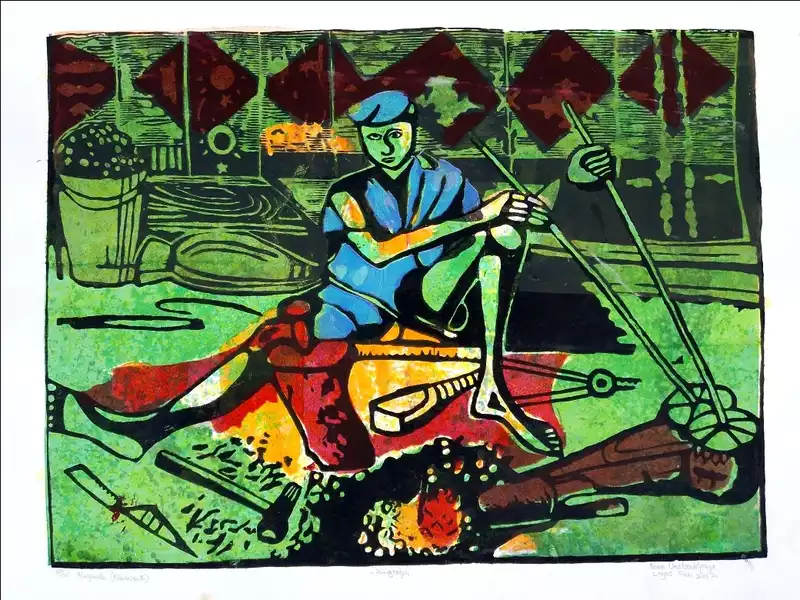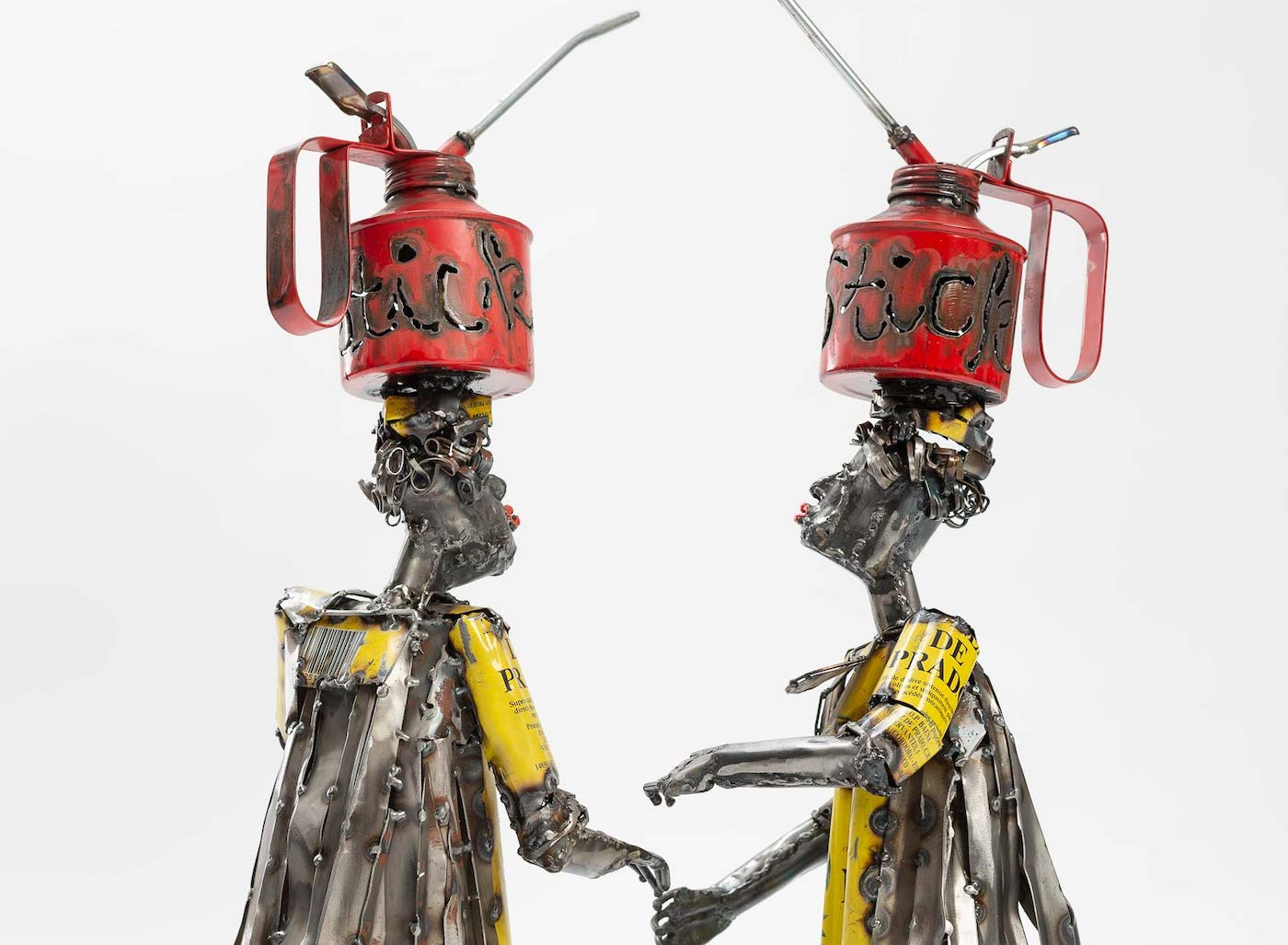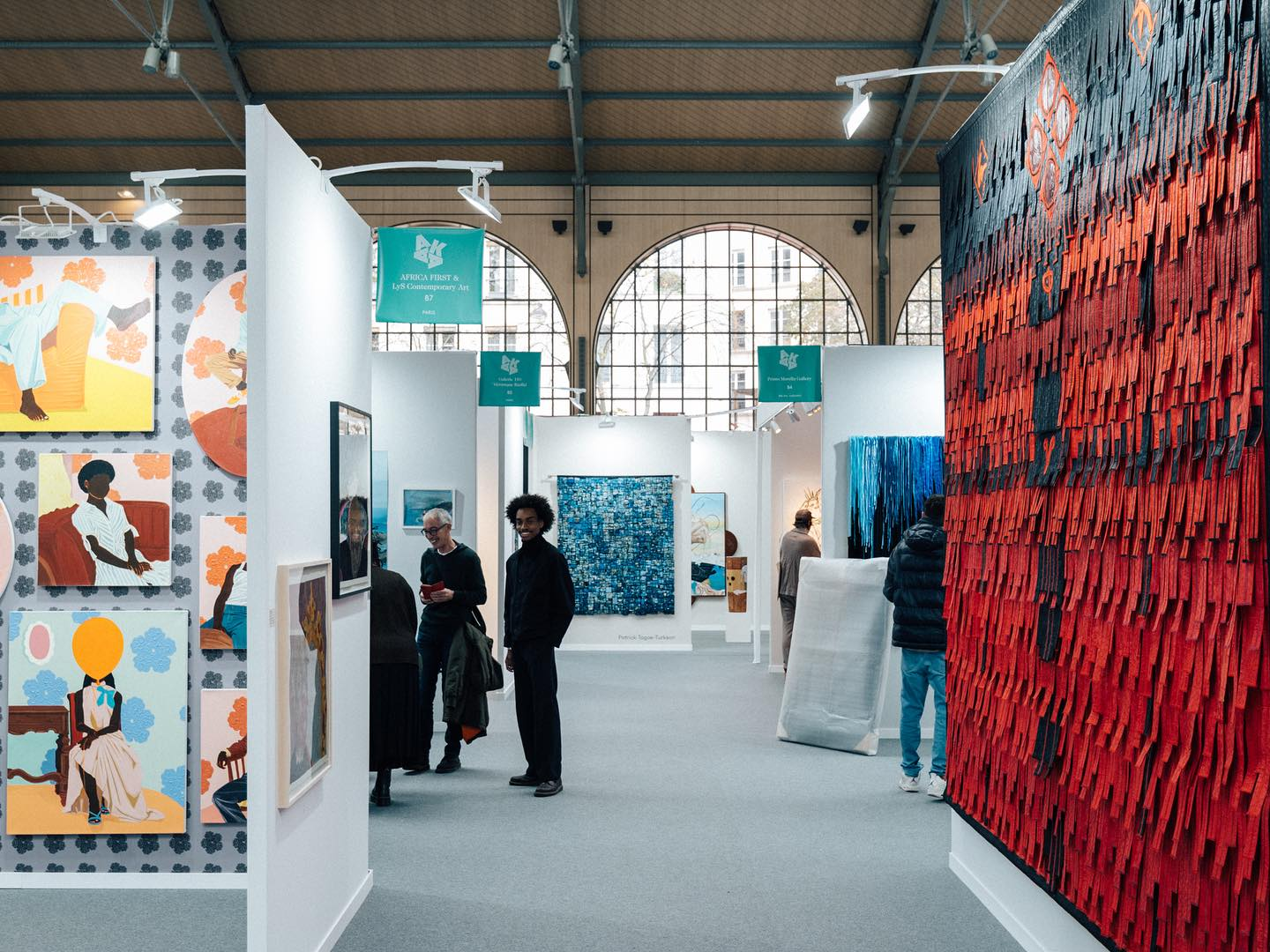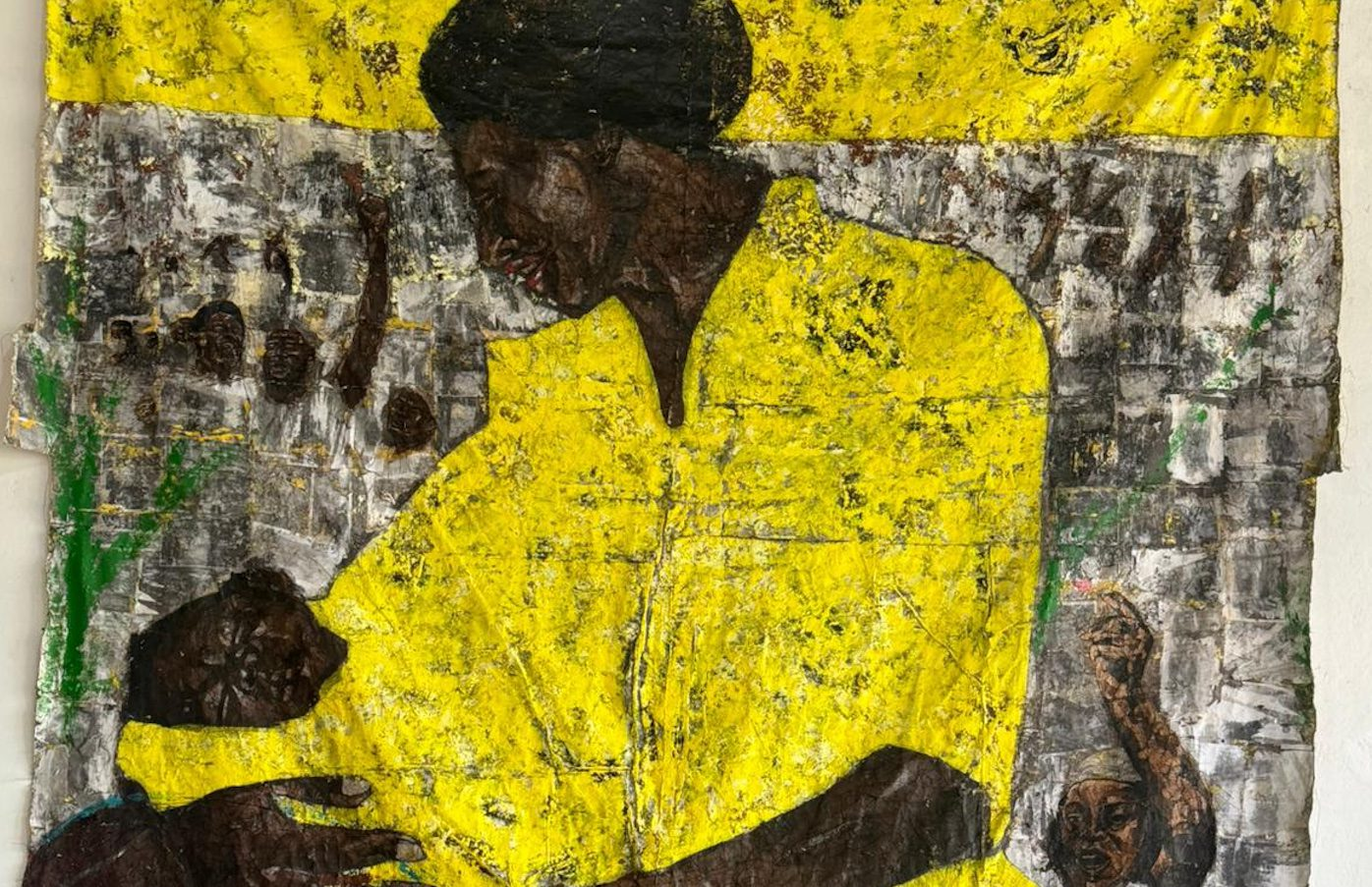In the reimagination of the African identity, artists are creating new worlds that intertwine with history and the fantastical visions of the future. Afrofutrism is a way for artists to explore new ideas and philosophies using elements of art, science, philosophy, and mixed media to promote experimentation and collaboration across the African diaspora. Artists are integrating aspects of human society, popular culture, and social movements while interrogating fundamental themes like race, identity, and time in their experimentations.
Meet 4 – emerging and established – Afrofuturist artists whose multidisciplinary practices invites us to observe the limitless nature of African art while confronting oppressive narratives and imagining in the contemporary world.
Kapwani Kiwanga

Born in Canada in 1978, Kapwani Kiwanga is well-known for her research-driven work influenced by marginalized histories. Her work frequently takes the form of installations, sound, video, and performance. Her singular approach and use of natural fibers, glass, ceramics, and steel in her large-scale mixed-media works have been shown in a variety of genres such as sculpture, installation, video, and performance. She deliberately confounds reality and fiction to disrupt hegemonic narratives while creating spaces for marginal discourse to thrive. Her methodology involves developing methods and protocols, as in scientific experiments, to define lenses through which one can view culture and its susceptibility to mutation. Afrofuturism, anti-colonial struggle and its memory, belief systems, vernacular and popular culture are just a few of the research areas that inspire her practice.

Her new work, Trinket, is currently on view at the 60th Venice Biennale with the Canadian Pavilion, is about creating a welcoming space for viewers to explore complex histories and ideas, and about balancing seduction and disruption.
Mary Sibande

Mary Sibande is a South African sculptor, painter, and installation artist whose work interrogates the intersections of race, gender, and labor in South Africa, while actively rewriting her own family’s legacy of forced domestic work under the Apartheid state. In a practice that spans sculpture, textile, photography, and more, Mary Sibande reclaims power for the Black female body in post-apartheid South Africa and rewrites her family’s legacy of domestic work. Her counter-histories often involve the artist’s sculptural alter ego, Sophie, whom Sibande dresses in vibrant outfits that resemble domestic worker uniforms. Yet she adorns them with elements of Victorian garments, transforming the humble into the spiritual, the overlooked into the spectacular.

David Alabo

Ghanaian-Moroccan artist David Alabo’s practice is deeply rooted in the exploration of Afro-surrealism and African futurism. His journey into the art world is driven by a profound connection to his dual heritage, manifesting in works that bridge the fantastical with the tangible. Through self-taught mastery in digital sculpting, computer-generated programming, and interactive installations, Alabo crafts narratives that challenge the conventional, inviting viewers into a realm where myth and reality converge. He is committed to exploring the rich tapestry of African folklore and contemporary narratives while pushing for their evolvement into a unique aesthetic that defies traditional narratives, encouraging viewers to consider new perspectives.

Philip Fagbeyiro

Philip Fagbeyiro (b.1997) is a world builder and artist based in Lagos, Nigeria. His practice encompasses a manifestation of his larger worldbuilding practice. Built out of images, text, prose, and 3d schematics, he views each visual piece as a fragment of an expansive, interconnected universe. Working with ink, he makes heavily detailed drawings on paper which represent the complexity of the worlds they render – these are future worlds where the scope of the human is stretched into domains the human itself cannot comprehend. He creates illustrative works that depict representative scenes of people interfacing with hypothetical future and past technologies. His interests lie in thinking about the near and far future of humanity and what we become afterward. He has exhibited his work in several group exhibitions locally and abroad, such as the LagosPhoto Festival, and Remote Gallery in Toronto.

Iyanuoluwa Adenle is a Nigerian art writer, essayist, and poet based in Lagos. She is currently the head writer at Omenai. Adenle has contributed to a number of art publications, including Tender Photo, Art News Africa, Pavillon 54, and Omenai.






